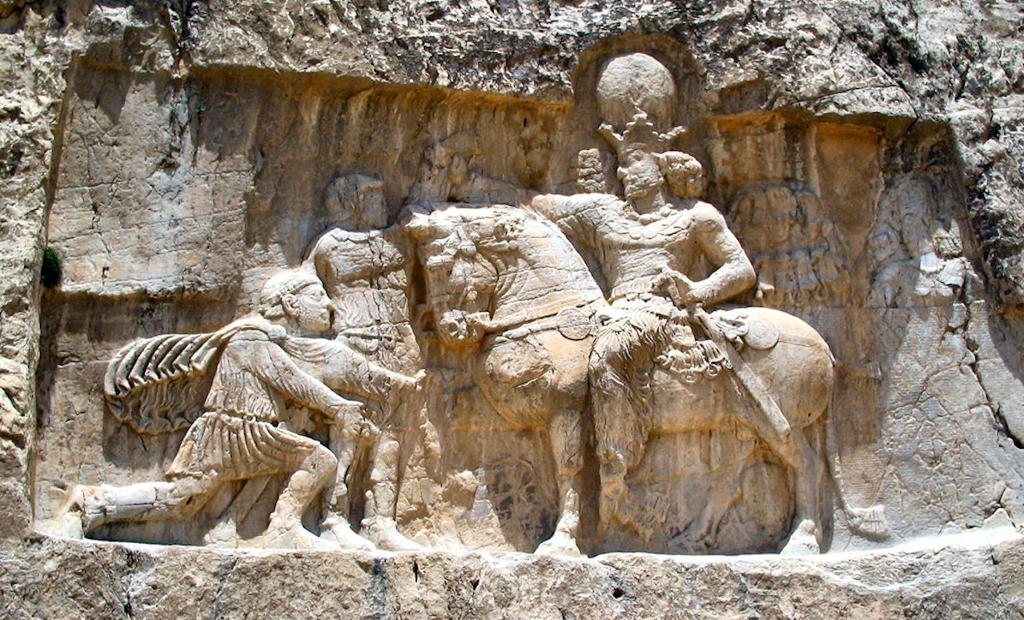
Amazon Audible Gift Memberships
Victory relief of Shapur at Naqs-i Rustam, Persia, c.260 AD

A larger image of the Victory relief of Shapur at Naqs-i Rustam, Persia, c.260 AD


Picture source: antikforever
Referenced as figure 32 in The Enemies of Rome from Hannibal to Attila the Hun by Philip Matyszak
32 Victory relief of Shapur at Naqs-i Rustam. The cloaked figure kneeling before the king is the captured emperor Valerian, and from this pose it is easy to understand the tradition that Shapur was in the habit of using him as a human mounting-block to get onto his horse.
Referenced on p.46, Sassanian Elite Cavalry AD 224-642 by Kaveh Farrokh
Shapur I, on horseback, receives the surrender of Emperor Valerian, who kneels before him. The standing figure is most likely the Helleno-Roman general Cyriades. (Kouchesfahani, Kial, Maddadi at Naghsh-e-Rustam)
Referenced as PLATE 83 on p.199, Moya Catherine Carey, Painting the Stars in a Century of Change: A Thirteenth-Century Copy of Al-Ṣūfīís Treatise on the Fixed Stars (British Library Or. 5323) (Thesis University of London, 2001).
This distinctive drapery style occurs throughout Sasanian art, in silver, of either royal or provincial manufacture, and monumental rock-reliefs.102 The third-century relief at Naqsh-e Rustam depicts the triumph of Shapur I (r.243-273AD) over the Roman emperor Valerian and Philip the Arab, and is executed in this style: rows of bellgathers ripple along the base of Shapur's tunic, and through his trailing cloak [PLATE 83]. Noticeably, this flamboyant drapery style is reserved for the Sasanian emperor: the robes of Valerian and Philip are delineated with plainer drapery-folds.103
102 Harper categorises Sasanian silver as either "central Sasanian", officially controlled by the royal court, or "provincial", produced beyond the royal workshop, perhaps for governor-princes in outer provinces, or independent minor rulers beyond the Sasanian realm (Harper & Meyers 1981 p.124).
103 The same allocation is observed in another relief at Naqsh-e Rustam, of Hormuzd II (r.302-309AD) defeating the plainly-draped Karens (reproduced in Dutz & Matheson 1997 p.47), and the relief at Tang-e Chogan in Bishapur (also third century AD), commemorating the victory of Bahram II (r.276-293AD) over the Arab nomads (reproduced in Dutz & Matheson 1997 pp.62-63).